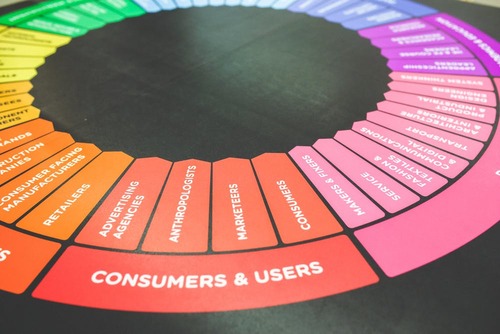In-House Marketing trends 2019/20
Posted over 5 years ago by Rebecca Thomas
Between 2019 and 2020 we are anticipating significant shifts for in-house marketers, which will affect internal recruitment and strategy development.
Rise of In-House
From 2019 to 2020, the in-housing trend is anticipated to continue, with 92% of global marketers planning to maintain or increase digital and programmatic marketing activities internally over the next year.
This decision to move marketing functions in-house may be driven by a desire to gain more control over communications. Potentially increasing efficiency and ensuring they are more personally targeted to audiences, alongside having control over the data gathered.
As these teams become more developed, the demand for specific skill-sets is set to increase.
We are already seeing an increase in client demand for media planners, digital marketers and analytics experts, consistent with expectations in-housing firms will be focussed more on digital platforms in the future.

Communication shifts
A key trend going into 2020 is the need for those marketeers who are working in-house to create more agile communications.
As consumers are becoming increasingly driven by authenticity in communications, they may be searching for brands who are more consistently transparent and socially connected. A single campaign promoting the ethicality of your brand may no longer suffice.
Instead, communications could hold a consistent message strategy which reinforces your brands purpose and objectives. This may work towards ensuring you are able to maintain consumer attraction to your brand, and is especially relevant for those looking to target niche markets during 2019/2020.
To get more consumers through its doors, during 2018/19 The Body Shop have shifted their marketing strategy to become more focussed on their activists roots, reinforcing this through lobbying, bringing back their coveted recycling scheme and creating refill stations in-stores.
Though financial results are not yet available for the whole of 2019, by adopting a more brand consistent message strategy, sales increased by 1.7% during 2018, demonstrating the power of this marketing tactic in a competitive retail environment.

Focussing on new markets
Whilst some brands are still focussing their attention on mastering the Millennial market, Generation Z are starting to enter the workforce, prompting a unique opportunity for brands to get ahead with a younger and less competitive audience.
Born between 1996-2010, Gen Z are anticipated to be the largest cohort of consumers by 2026. As brand loyalty is garnered from the start of a buyers purchasing journey, it is important brands start to portray the correct image to attract and retain Gen Z today.
To assist this, marketing strategies could be adapted to meet Gen Z preferences. Some of the key factors are identified below.
60% prefer cool products over experiences.
34% want to be reached through social media.
Ads which include celebrity endorsers are favoured over those which create an emotional connection.
Gen Z are driven to live life pragmatically with ethical intentions.
Heading into 2020, we anticipate seeing more brands attempting to connect with the Gen Z market, however we anticipate that it is those who do it in an authentic and genuine manor who will benefit the most.

Optimising for mobile
As brands seek to tap into new younger markets, the need to optimise for mobile marketing is prevalent now more than ever.
Smartphones are now the most used device amongst Generation Z, accounting for 15.4 hours a week of their media consumption. This is also increasing amongst older consumers, with smartphone usage accounting towards 14.8 hours of weekly Millennial media consumption habits.
As mobile technologies improve, the ways people discover brands is set to change. By 2020, it is expected voice searches will account for 50% of all search discoveries. This means featuring on page 1 is no longer good enough, where SEO, keywords and content need to be adapted and personally tailored to audiences to ensure you feature on top.
For brands, this sparks a need to act ahead of the game by training and recruiting more skilled digital marketers. Though the current skills gap means this may be difficult, investing in this talent today means you will be better equipped to adapt to the competitive future market.
For a more in-depth chat about how marketing trends are anticipated to impact your company or recruitment processes, get in touch with our in-house team today or download the report.
Image credit:
Header: Computer data display documents by Lukas https://www.pexels.com/photo/computer-data-display-documents-577210/
Image 1: Customers users color wheel by Kaboompics .com https://www.pexels.com/photo/customers-users-color-wheel-6231/
Image 2: Woman using smartphone by Duong Nhan https://www.pexels.com/photo/woman-using-smartphone-1510154/
Image 3: Closed up photography of two iphones by Steve Johnson https://www.pexels.com/photo/closed-up-photography-of-two-iphones-1028674/




